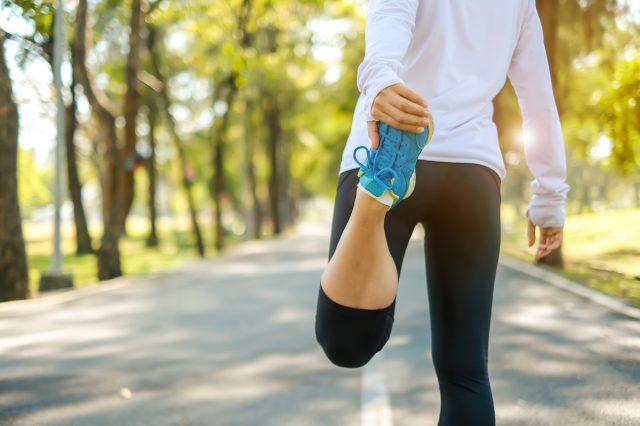4 Walking Intervals That Melt Stubborn Fat Better Than Cardio After 50

Whether crushing an incline session on the treadmill or exploring a new trail, walking can be a stellar way to get fit. With the rise in trends like the 12-3-30 weight-loss workout and the Japanese walking method, it’s no wonder people are gravitating toward this incredibly underrated yet powerful form of physical activity. To help optimize your routine, we’re here with four walking intervals that will help you melt stubborn fat better than cardio—especially after 50.
“Walking is the most accessible and excuse proof form of exercise,” says Jill Brown, master health coach, personal trainer, nutritionist and fitness instructor at Equinox Fitness Clubs. “Cardiovascular exercise is exactly what it says – exercise that benefits the heart, blood vessels and lungs. Strength training, while it does boost the heart rate, increases muscle mass, helps prevent our metabolic rate from dropping and is a key factor in longevity. Exercise overall is the best anti-aging medicine we have.”
Fat Loss vs. Fat Burning

Before getting started, it’s crucial to understand the difference between fat loss and fat burning.
“Fat burning doesn’t always lead to fat loss—only a calorie deficit can lead to fat loss,” stresses Brown. “So if you’re exercising to lose weight and you eat back the same amount of calories you burned, you will not lose weight.”
Carbs and fat are both utilized as energy sources during workouts.
“Even if you were to only burn carbs during exercise but you burn more calories than you consume, you will lose fat weight. This is what intervals do,” Brown points out. “You burn more calories from carbs than from steady-state at a light -moderate intensity.”
The higher your heart rate is, the greater amount of calories you’ll torch from carbs.
“But at a higher heart rate, you also burn more calories overall. It mainly comes down to time,” Brown adds.
4 Walking Intervals That Melt Stubborn Fat

Brown’s personal favorite is using the treadmill to alternate between flats and hills or smaller and higher hills. This can be performed in many ways—just a few are outlined below.
- Keep your pace at 3.0mph or more as you alternate between level 1 and level 5, then level 1 and level 6, level 1 and level 7, and so on. Continue until you reach your max level. Do each level for 1 to 2 minutes. Aim for a minimum of 5 high-intensity intervals or more as you progress.
- Alternate between smaller and higher inclines—i.e., switching between levels 5 and 10. Brown recommends programming 2 to 3 minutes at level 5 and 1 minute at level 10. Aim for a minimum of 5 high-intensity intervals or more as you progress.
- If you enjoy walking outdoors on flat ground, incorporate speed rather than inclines. Alternate between a moderate pace—where you can converse comfortably without being out of breath—and a fast pace for 1 to 2 minutes. Aim for a minimum of 5 high-intensity intervals or more as you progress.
- Test out the Japanese walking method, which requires you to walk at a high intensity for 3 minutes, a low intensity for 3 minutes, and repeat for 30 minutes in total.
Muscle Groups That Benefit Most From Walking Intervals

Walking intervals put your glutes, quads, hamstrings, and calves to work. As you rev up the intensity, you engage the core muscles as well. Recruiting all of these muscle groups is particularly beneficial as you age and naturally lose lean muscle mass, a process known as sarcopenia.
“Even if you’re very fit, you will likely have less muscle mass than when you were 25. The type of muscle we lose the fastest are type 2 (fast twitch) muscle fibers,” Brown says. “These are the muscle fibers we use for sprints, jumps and power. Intervals can help rebuild some of these muscles, especially if you do uphill walking with speed.”
Brown recommends performing interval workouts twice a week.